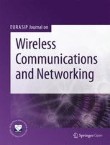Cell-free massive multiple-input multiple-output (MIMO) represents a radical technological paradigm and a practical implementation of network MIMO and distributed antenna systems concepts. In cell-free massive MIMO, a large number of access points (APs) are distributed over a wide geographic area to simultaneously serve all user equipments (UEs). Each AP is connected to one or several central processing units (CPUs) through a front-haul network, while the CPUs are connected via a back-haul network. Within such configuration, UEs can get closer to APs, and hence, avail of a high degree of macro-diversity and low path losses. As a result, many UEs can be served simultaneously with uniformly good quality-of-service, which means cell-free massive MIMO can offer a higher coverage probability compared with co-located massive MIMO. Nevertheless, the transformation of cell-free massive MIMO from a speculative academic concept into a commercial reality needs to be done step-by-step from distributed cellular massive MIMO to a completed cell-free system, and hence, there are fundamental challenges that need to be addressed. For example, we urgently need scalable and simple transmission protocols, advanced signal processing algorithms, and power control techniques alongside new practical user-centric schemes that will dynamically select the most appropriate set of APs to serve groups of users, to name but a few. We also particularly need advanced centralized radio access network (C-RAN) architecture that will reduce the implementation cost and energy consumption of cell-free massive MIMO systems. The goal of this special issue is to solicit the recent developments of cell-free massive MIMO technologies with a vision of their potential integration into beyond 5G and towards 6G.
Topics of interest include, but are not limited to the following:
- Channel modelling and performance analysis
- Network architectures and wireless transmission techniques
- Resource allocation and management strategies for cell-free/distributed massive MIMO
- Testbeds, experimental measurements, and performance evaluation
- AI-based techniques, machine learning and deep learning for cell-free/distributed massive MIMO
- Novel multiple access protocols (e.g. grant free transmission, massive connection, etc.)
- Cell-free/distributed massive MIMO techniques for high mobility
- URLLC/massive machine type of communications
- User-centric cell-free ultra-dense massive MIMO
- Physical-layer security in cell-free/distributed massive MIMO
- Reconfigurable intelligent surface-aided cell-free/distributed massive MIMO
- Cell-free/distributed massive MIMO communications for UAVs
- Cell-free/distributed massive MIMO NOMA
- Cell-free/distributed massive MIMO for millimeter-wave/terahertz communications
- Cell-free/distributed massive MIMO for distributed learning and networked control
- Edge computing and smart caching in distributed antenna systems
- Coordinated multi-point and functional splitting in C-RAN
- Scalable protocols for cell-free/distributed massive MIMO
- Energy and cost efficient design of cell-free/distributed massive MIMO
Important dates
Paper submission deadline: Feb 15, 2022
Decision notification: May 15, 2022
Final Manuscript due: July 15, 2021
Lead Guest Editor:
Hien Quoc Ngo, Queen’s University Belfast, UK
Guest Editors:
- Michalis Matthaiou, Queen’s University Belfast, UK
- Emil Björnson, KTH Royal Institute of Technology, Sweden
- Jiayi Zhang, Beijing Jiaotong University, China
- Özlem Tugfe Demir, KTH Royal Institute of Technology, Sweden
Submission Guidelines:
Authors should prepare their manuscript according to the guide for authors available from the online submission page of the EURASIP Journal on Wireless Communications and Networking at https://jwcn-eurasipjournals.springeropen.com/. Authors should select "Backscatter Communications for the Internet of Things" in the submission process. Submitted papers must contain original work, which has neither been previously published nor it is currently under review by another journal or conference. Previously published or accepted conference papers must contain at least 50% new material to be considered for the special issue.All papers will be peer-reviewed by at least two independent reviewers. Requests for additional information should be addressed to the corresponding guest editor.Submissions will also benefit from the usual advantages of open access publication:Rapid publication: Online submission, electronic peer review and production make the process of publishing your article simple and efficientHigh visibility and international readership in your field: Open access publication ensures high visibility and maximum exposure for your work - anyone with online access can read your articleNo space constraints: Publishing online means unlimited space for figures, extensive data and video footage. Authors retain copyright, licensing the article under a Creative Commons license: articles can be freely redistributed and reused as long as the article is correctly attributed. For editorial inquiries please contact vincent.salvo@springer.com. Sign up for article alerts to keep updated on articles published in EURASIP Journal on Wireless Communications and Networking - including articles published in this special issue!
